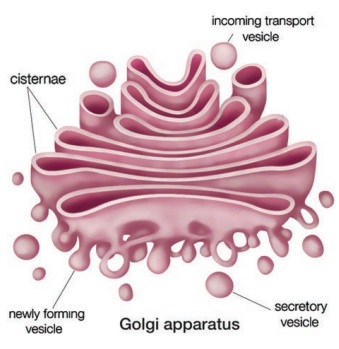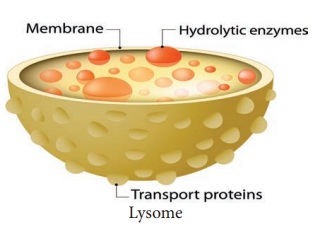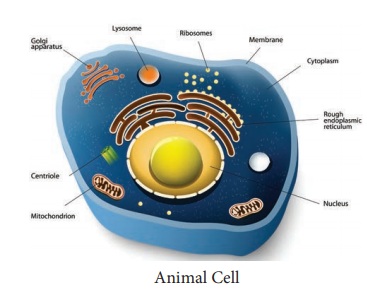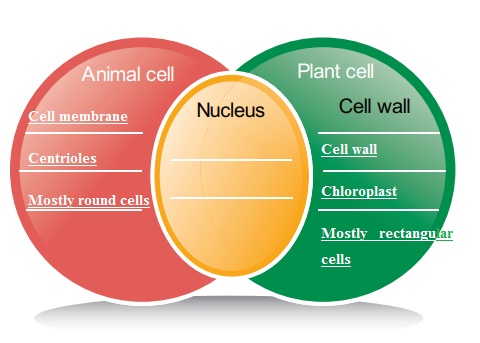Cell Biology | Term 2 Unit 4 | 7th Science - Questions Answers | 7th Science : Term 2 Unit 4 : Cell Biology
Chapter: 7th Science : Term 2 Unit 4 : Cell Biology
Questions Answers
Evaluation
I. Choose
the correct answer
1. Basis
unit of life.
a. Cell
b. Protoplasm
c. Cellulose
d. Nucleus
Answer: A) Cell
2. I am
the outer most layer of an animal cell. Who am I?
a. Cell wall
b. Nucleus
c. Cell membrane
d. Nuclear
membrane
Answer: C) Cell membrane
3. Which
part of the cell is called the brain of the cell?
a. Lysosome
b. Ribosome
c. Mitochondria
d. Nucleus
Answer: D) Nucleus
4. _______
helps in cell division
a. Endoplasmic reticulum
b. Golgi complex
c. Cnetriole
d. Nucleus
Answer: C) Centriole
5. Suitable
term for the various components of cell is____
a. Tissue
b. Nucleus
c. Cell
d. Cell organelle
Answer: D) Cell organelle
II Fill in
the Blanks
1. The jelly like substance present in the cell is called cytosol.
2. I convert the Sun’s energy into food for the
plant. Who am I?
3. Mature Red blood cell do not contain a
4. Unicellular organisms can only be seen under a
5. Cytoplasm
plus nucleoplasm is equal to
III. True or False – If false give the correct answer
1. Animal cells have a cell wall. (False)
2. Salmonella is a unicellular bacteria.
3. Cell membrane is fully permeable
Cell membrane is
selectively permeable.
4. Only plant cells have chloroplasts.
5. Human stomach is an organ.
6. Ribosomes
are small organelles with a membrane.
IV. Match the following
1. Transporting
channel - Nucleus
2. Suicidal bag -
Endoplasmic reticulum
3. Control room -
Lysosome
4. Power house -
Chloroplast
5. Food producer - Mitochondria
Answer
1. Transporting channel - Endoplasmic
reticulum
2. Suicidal bag - Lysosome
3. Control room - Nucleus
4. Power house - Mitochondria
5. Food producer - Chloroplast
V. Analogy
1. Bacteria : microorganism :: mango tree : macroscopic organism
2. Adipose : tissue :: eye :
3. Cell wall : plant cell :: centriole :
4. Chloroplast : photosynthesis :: mitochondria :
VI. Choose
the correct alternative from the following
1. Assertion (A) : Tissue
is a group of dissimilar cells.
Reason (R) : Muscle
is made up of Muscle cell.
a). Both A and R are true
b). Both A and R are false
c). A is true but R is false.
d). A is false but R is true.
Answer: d). A is false but R is true.
2. Assertion (A) :
Majority of cells cannot be seen directly with naked eye because.
Reason (R) : Cells
are microscopic.
a). Both A and R are true
b). Both A and R are false
c). A is true but R is false.
d). A is false but R is true.
Answer: d). A is false but R is true.
VII. Very
short answer
1. What are the functions of cell wall in plant cell?
Plant cells have a cell wall around the cell membrane that is
rigid. It maintains the shape of the cell. It provides support and protection
to the cell content.
2.
Which organelle uses energy from sunlight to make starch?
Chloroplasts in plant cells
use energy from sunlight to make starch.
3. What
are the main things in a nucleus?
Plant and animal cells have a nucleus inside the cytoplasm. It
is surrounded by a nuclear envelope. One or two nucleolus and the chromatin
body are present inside the nucleus.
4. What
does cell membrane do?
Cell membranes are selectively permeable. They only allow
certain substances to pass in and out of the cell.
5. Why
lysosomes are known as scavengers of the cell?
Lysosomes are the main digestive compartments of the cell. They
lyse (cause destruction and dissolution to) a cell. As they dissolve, destroy
and digest old cells they are called scavengers of the cell.
6. Teacher
said “A virus is not an organism” Do you agree with this statement or not? Explain
Why?
(a) Viruses are not made out of cells. They can't keep
themselves in a stable state. They don't grow. They can't make their own
energy. They are more *android than real living organisms.
(b) Living things maintain *homeostasis. They have different
levels of organization. Living things grow and reproduce living things. They
use energy and respond to stimuli. They adapt to their environment. As these
characteristics are absent in a virus, it is not regarded as an organism.
(*homeostatis - maintenance of metabolic equilibrium).
(*android - robots like human beings)
VIII. Give
short Answer
1. Why
the cell is very important for us?
Cells are the basic structural and functional units of all
living organisms. All living things like plants and animals have cells. Without
cells we cannot live. So the cell is very important for us.
2.
Distinguish between the following pairs (i) Smooth ER and Rough ER (ii) Cell wall and
cell membrane (iii) Chloroplast and mitochondria
(i) Smooth
Endoplasmic Reticulum has no ribosomes. It produces
lipids and steroids and transports them within the cell.
Rough Endosplasmic
Reticulum has ribosomes. So it remains rough. It helps in
the synthesis of protein.
(ii) Cell wall and
cell membrane : All cells have an outer covering
called cell membrane. But only plants have cell wall in their cells. Owing to
this cell wall plants have a much more regular and rigid shape.
(iii) Chloroplast
and mitochondria Chloroplasts are green organelles
found only in the cells of plants. They produce food from the Sun's energy.
Mitochondria are round or oval shaped organelles. They are responsible for
cellular respiration which releases energy from the food.
3. Write correct sequence from cell to organism?
Cell → Tissue → Organ →
Organ system → Organism
4. Write a short note on nucleus.
All plant and animal cells have a nucleus inside the cytoplasm.
The nucleus is surrounded by a nuclear envelope. One or two nucleolus and the
chromatin body are present inside the nucleus. The nucleus is responsible for
the inheritance of character from one generation to another. It controls all
the processes inside the cell and it is called the “brain” of the cell.
5. Classify the following terms into cells, tissues, organs and write in the tabular column given below
Neuron, Lungs. Xylem, brain, adipose, Leaf, RBC, WBC, hand, muscle, heart, ovum, squamous, phloem, cartilage.
Cell : Neuron, RBC, WBC, Ovum,
Tissue : Xylem, Adipose , Muscle , Squamous, Phloem, Cartilage
Organ : Lungs, Brain, Leaf, Hand, Heart
6.
On the lines given below, write about what you have learned from the activities
done in this lesson.
Let me tell you about some of the important things I’ve learned about cells. First, I’ll start with…
IX. Give long answer
1. Write about any three organelles in detail.
Golgi Complex

Membrane-bounded sacs are stacked on top of one another with
associated secretory vesicles. They are collectively known as golgi complex.
Functions of golgi complex are the production of secretory substances,
packaging and secretion. This is the secret behind the change in the colour and
taste of fruits.
Lysosome – “
suicidal bag”.

Lysosomes are very small to view using a light microscope. They
are the main digestive compartments of the cell. They destroy and dissolve the
cells. As they lyse a cell they are called “suicidal bag’’.
Centrioles:

They are generally found close to the nucleus and are made up of
tube-like structures.
Centrioles or centrosomes are present only in animal cells and
absent in plant cells. They help in the separation of chromosomes during cell
division.
2. In a
situation, how to explain, while your friend ask what is this, never seen
before?

1. Membrane - It is a
plasma membrane. It forms the boundary of an animal cell.
2. Cytoplasm - The
fluid in a cell outside the nucleus is called cytoplasm. It contains cell organelles.
3. Rough Endoplasmic
Reticulum : It is a membranous net work in cytoplasm. It is rough due to
the presence of ribosomes. It helps in the synthesis of protein.
4. Nucleus : All
cells have nucleus inside the cytoplasm. It is surrounded by a nuclear envelope.
It controls all the processes and chemical reactions that takes place inside
the cell.
5. Mitochondrian - It
is the powerhouse of the cell. It is responsible for cellular respiration which
releases the energy from the food.
6. Centriole : It is
a pair of minute cylindrical structure. It is involved in the process of cell
division.
7. Golgi apparatus :
It is a complex of vesicles and folded membranes. It is involved in secretion
and intracellular transport.
8. Lysosome :
Lysosomes are very small. They are main digestive compartments of the cell. A
lysosome is called the suicidal bag.
9. Ribosomes : They
are minute particles consisting of RNA. They synthesize polypeptides and
proteins.
3. Compare the plant cell and the animal cell and complete the illustration given below.
Animal cell
Cell membrane
Centrioles
Mostly round cells
Plant cell
Cell wall
Chloroplast
Mostly rectangular
cells

X. Higher
order thinking question
Virus is called Acellular. Why?
Viruses are not built up out of cells. They are 'cell free'. So they are called acellular.
Related Topics